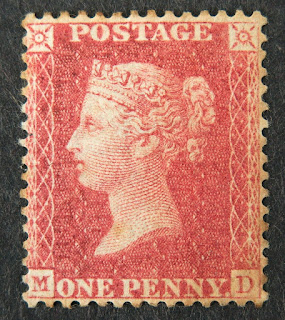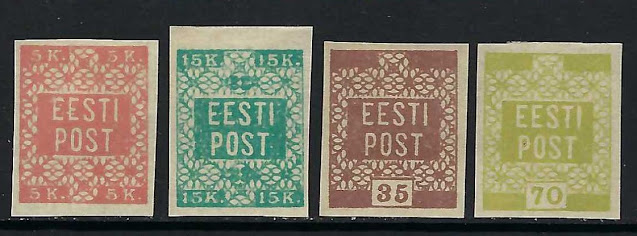Here are some events that happened on February 24th. It could be an event or a person that died or was born on that day
1854 – A Penny Red with perforations was the first perforated postage stamp to be officially issued for distribution.
The Penny Red was a British postage stamp, issued in 1841. It succeeded the Penny Black and continued as the main type of postage stamp in the United Kingdom of Great Britain and Ireland until 1879, with only minor changes to the design during that time. The colour was changed from black to red because of difficulty in seeing a cancellation mark on the Penny Black; a black cancel was readily visible on a Penny Red.
Initially, the same plates used to print the Penny Black were used to print the Penny Red. About 21 billion Penny Reds were printed by Messrs. Perkins, Bacon & Co. The stamp had no perforations, and had to be cut from the sheet using scissors in the same manner as for the Penny Black and the early printings of the Two pence blue. Perforations, (experimental gauge 16), first came into use in 1850 and were officially adopted in 1854 (in the same size as the experimental issue). The experimental perforated issue can be distinguished from the general issue as the later was applied to stamp which used a different alphabet type for the letters in the lower corners. Each stamp has unique corner letters AA, AB, AC ... AL etc., so its position on the plate can be identified.
In January 1855, the perforation size was changed from 16 to 14 as it was found that the sheets were coming apart too easily. The reduced size allowed the sheets to remain intact until pressure was applied to force the separation.
A perforated Penny Red stamp
1868 – Andrew Johnson becomes the first President of the United States to be impeached by the United States House of Representatives. He is later acquitted in the Senate.
Andrew Johnson (December 29, 1808 – July 31, 1875) was the 17th president of the United States, serving from 1865 to 1869. He assumed the presidency as he was vice president at the time of the assassination of Abraham Lincoln. Johnson was a Democrat who ran with Lincoln on the National Union ticket, coming to office as the Civil War concluded. He favored quick restoration of the seceded states to the Union without protection for the former slaves. This led to conflict with the Republican-dominated Congress, culminating in his impeachment by the House of Representatives in 1868. He was acquitted in the Senate by one vote. His main accomplishment as president was the Alaska purchase.
Johnson was born in poverty in Raleigh, North Carolina, and never attended school. He was apprenticed as a tailor and worked in several frontier towns before settling in Greeneville, Tennessee. He served as alderman and mayor there before being elected to the Tennessee House of Representatives in 1835. After brief service in the Tennessee Senate, Johnson was elected to the House of Representatives in 1843, where he served five two-year terms. He became governor of Tennessee for four years, and was elected by the legislature to the Senate in 1857. In his congressional service, he sought passage of the Homestead Bill which was enacted soon after he left his Senate seat in 1862. Southern slave states seceded to form the Confederate States of America, including Tennessee, but Johnson remained firmly with the Union. He was the only sitting senator from a Confederate state who did not resign his seat upon learning of his state's secession. In 1862, Lincoln appointed him as military governor of Tennessee after most of it had been retaken. In 1864, Johnson was a logical choice as running mate for Lincoln, who wished to send a message of national unity in his re-election campaign; and became Vice-President after a victorious election in 1864.
Johnson implemented his own form of Presidential Reconstruction, a series of proclamations directing the seceded states to hold conventions and elections to reform their civil governments. Southern states returned many of their old leaders and passed Black Codes to deprive the freedmen of many civil liberties, but Congressional Republicans refused to seat legislators from those states and advanced legislation to overrule the Southern actions. Johnson vetoed their bills, and Congressional Republicans overrode him, setting a pattern for the remainder of his presidency. Johnson opposed the Fourteenth Amendment which gave citizenship to former slaves. In 1866, he went on an unprecedented national tour promoting his executive policies, seeking to break Republican opposition. As the conflict grew between the branches of government, Congress passed the Tenure of Office Act restricting Johnson's ability to fire Cabinet officials. He persisted in trying to dismiss Secretary of War Edwin Stanton, but ended up being impeached by the House of Representatives and narrowly avoided conviction in the Senate. He did not win the 1868 Democratic presidential nomination and left office the following year.
Johnson returned to Tennessee after his presidency and gained some vindication when he was elected to the Senate in 1875, making him the only former president to serve in the Senate. He died five months into his term. Johnson's strong opposition to federally guaranteed rights for black Americans is widely criticized; he is regarded by many historians as one of the worst presidents in American history.
US stamps depicting Andrew Johnson
1918 – Estonian Declaration of Independence.
The Estonian Declaration of Independence, also known as the Manifesto to the Peoples of Estonia (Estonian: Manifest Eestimaa rahvastele), is the founding act of the Republic of Estonia from 1918. It is celebrated on 24 February, the National Day or Estonian Independence Day.
The declaration was drafted by the Salvation Committee elected by the elders of the Estonian Provincial Assembly. Originally intended to be proclaimed on 21 February 1918, the proclamation was delayed until the evening of 23 February, when the manifesto was printed and read out aloud publicly in Pärnu. On the next day, 24 February, the manifesto was printed and distributed in the capital, Tallinn.
First stamps issued by Estonia




No comments:
Post a Comment